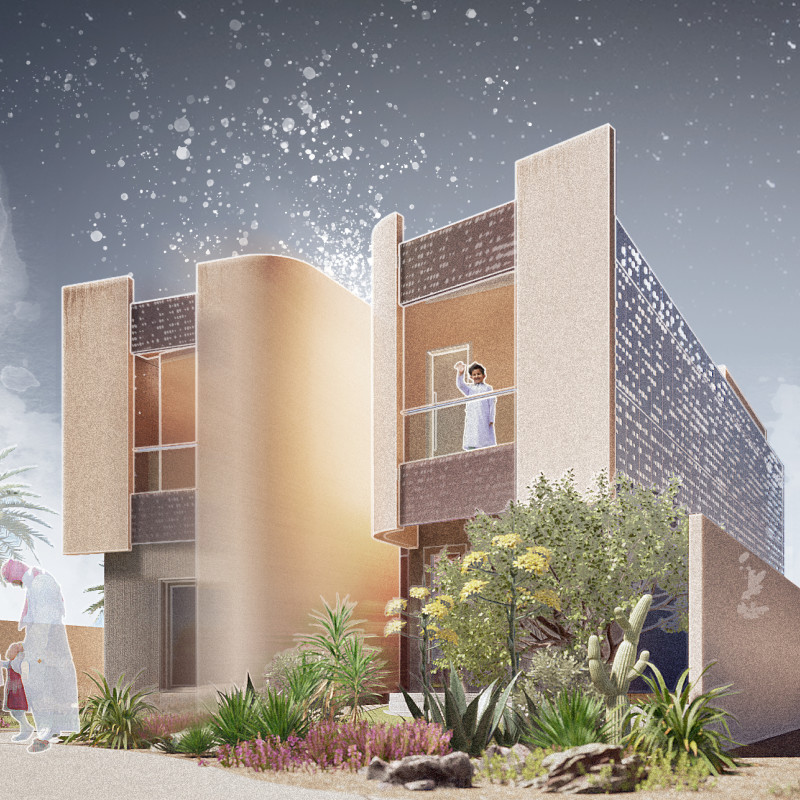5 key facts about this project
At its core, the project operates as a [insert primary function, e.g., community center, residential building, art gallery], situated within a vibrant neighborhood that values both tradition and modernity. The layout is designed to facilitate a range of activities, fostering interaction and collaboration among its occupants. By prioritizing open spaces and flexible arrangements, the architecture encourages diverse uses, making it a vital part of community life.
The architectural design showcases a careful consideration of materials, employing a palette that speaks to both durability and warmth. Predominantly featured are concrete elements, providing structural integrity while offering a contemporary look. These concrete surfaces are complemented by extensive use of glass, which not only maximizes natural light but also establishes visual connectivity with the exterior environment. The large expanses of glass create a dialogue between the inside and outside, enhancing the spatial experience and inviting the natural surroundings into the building.
Wood elements add an inviting touch, particularly in areas such as flooring and structural accents. The choice of wood introduces a layer of comfort and familiarity, balancing the more industrial feel of concrete and metal. The integration of locally sourced materials emphasizes sustainability and reinforces local character. Moreover, strategic landscaping around the project enhances its context, softening the hard edges and integrating natural elements into the design.
Unique design approaches are evident throughout the project, with careful attention paid to sustainability and environmental impact. The architecture utilizes smart technologies like passive solar heating, rainwater harvesting systems, and integrated green roofs. These features not only contribute to energy efficiency but also promote a sustainable lifestyle among users. The building's orientation, coupled with shading devices, takes advantage of optimal solar exposure while minimizing heat gain, reflecting a comprehensive approach to energy management.
The spatial organization offers a fluid movement from one area to another, guided by an intuitive layout that caters to natural circulation patterns. Transition zones, such as hallways and communal spaces, are designed to function as informal gathering spots, encouraging collaboration and social interactions. The incorporation of flexible walls enables the reconfiguration of spaces according to the needs of its users, allowing for an adaptable environment that evolves over time.
In addition to functional spaces, artistic elements are weaved into the architecture, enhancing the overall experience. The inclusion of local art pieces and sculptures provides a cultural depth, creating a dialogue between the building and the community it serves. This artistic integration serves not only as decoration but as a means of storytelling, reflecting the identity and history of the locality.
In summary, this architectural project represents a synthesis of thoughtful design, materiality, and community engagement. It stands as a testament to contemporary architectural ideas that prioritize sustainability, flexibility, and social interaction while maintaining a respectful relationship with its environment. For those interested in exploring the nuances of this design further, it is recommended to review the architectural plans, sections, and other related designs that offer deeper insights into the project’s complexities and innovative approaches. The presentation details will provide a more thorough understanding of how this architecture meets both practical needs and aesthetic aspirations.


























